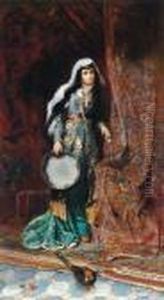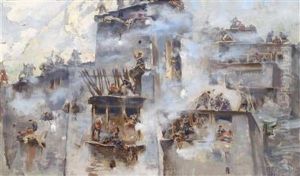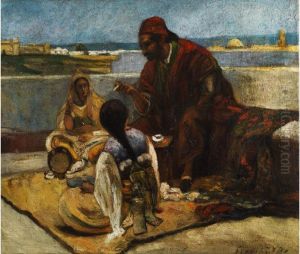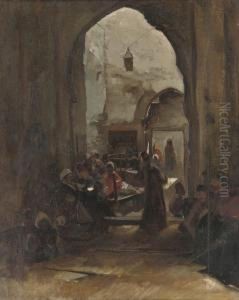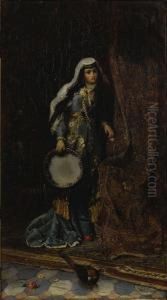Ferencz, Franz Eisenhut Paintings
Franz Eisenhut was an Austro-Hungarian painter known for his Orientalist themes and detailed depictions of exotic subjects. He was born on August 18, 1857, in Banat, which at the time was part of the Austro-Hungarian Empire and today is divided among Romania, Serbia, and Hungary. Eisenhut showed an early talent for art, and his skills were fostered through his education.
Eisenhut studied at the Vienna Academy of Fine Arts from 1872 until 1882. During his time at the Academy, he was influenced by the Orientalist movement, which was popular among European artists in the 19th century. This movement was characterized by Western artists' fascination with the cultures and peoples of the Middle East, North Africa, and Asia, often romanticizing and exoticizing them in their works.
After completing his studies, Eisenhut traveled extensively throughout the Ottoman Empire, visiting regions such as Bosnia, Herzegovina, and Macedonia. The experiences and impressions from his travels became a central theme in his paintings. He meticulously captured the costumes, architecture, and atmosphere of the places he visited, earning him recognition for his authentic and detailed representations.
Eisenhut exhibited his works in various cities across Europe, such as Vienna, Munich, and Paris, and he received numerous awards for his paintings. His artworks were highly sought after by collectors and were considered valuable for their ethnographic accuracy as well as their aesthetic appeal.
Unfortunately, Franz Eisenhut's life and career were cut short when he died on June 10, 1903, in Vienna. Despite his early death, Eisenhut's work left a lasting impact on the Orientalist genre. His paintings are still appreciated today for their technical skill and the window they provide into the perception of Eastern cultures by Western artists during the late 19th century.
